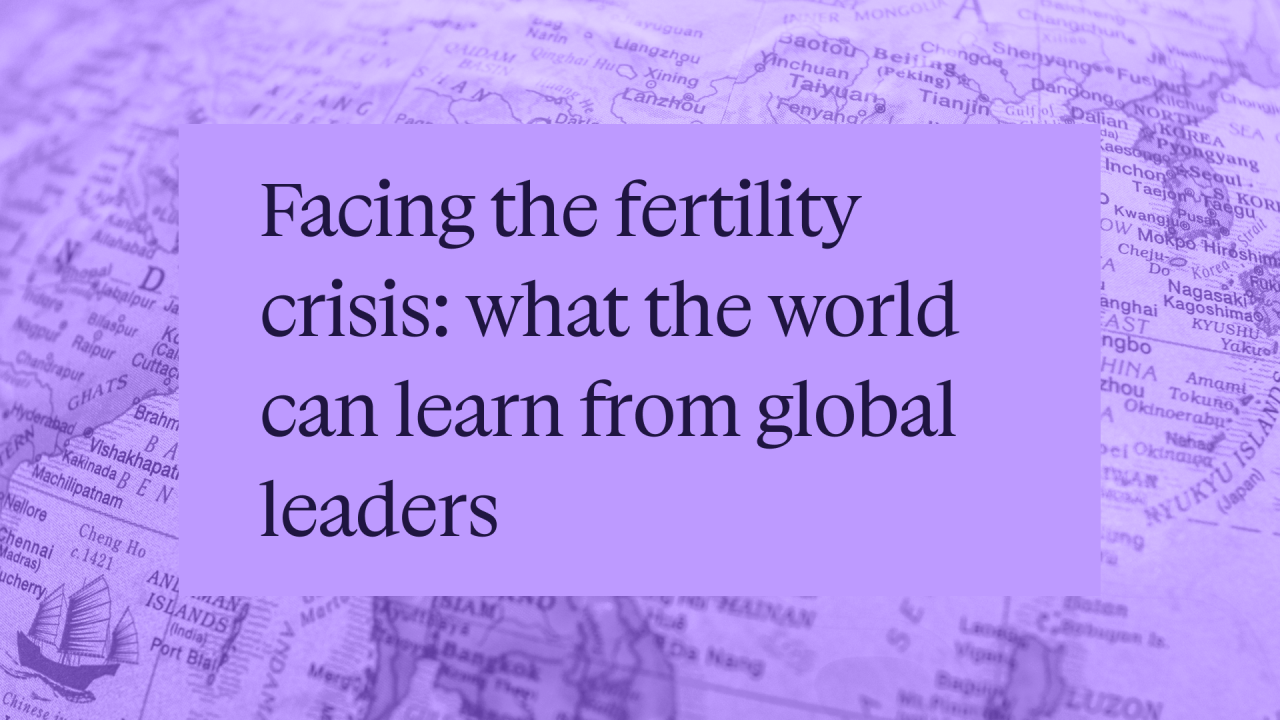Facing the Fertility Crisis: What the World Can Learn from Global Leaders

Fertility is in crisis, and not only for individuals. Across the globe, birth rates are declining, demand for IVF is rising, and access to care remains inconsistent and often unreliable. For millions of people, the path to parenthood is filled with delays, financial strain, and outdated policies that fail to meet their needs.
This is not a distant concern. It is already reshaping population trends, challenging health systems, and redefining how we think about reproductive care. The choices countries make today will determine how future generations access, experience and benefit from fertility services.
In this blog series, we explore how different nations are approaching the fertility challenge and consider what their experiences can teach other healthcare systems, policy leaders and clinic teams.
Why Fertility Needs Urgent Attention
Globally, people are choosing to have children later in life, influenced by economic pressures, shifting social norms, changing family structures and limited fertility education. In countries like Japan and South Korea, these trends have led to some of the lowest birth rates in the world, prompting national discussions on long-term workforce and economic planning.
At the same time, infertility is affecting approximately one in six people of reproductive age, according to the World Health Organization. Research suggests this figure is likely to grow, with projections indicating that by 2040, more than 30 percent of couples may require fertility support due to a combination of age-related decline, environmental stressors and wider health issues.
This rising demand, paired with uneven access to care, presents a complex challenge that cannot be solved by clinical innovation alone. It calls for structural change across funding models, regulation, and patient support systems.
Different Countries, Different Approaches
The global approach to fertility care is far from uniform. While some countries provide publicly funded IVF and inclusive care models, others rely heavily on private treatment or place restrictive limits on who can access support.
Some lead with strong policy frameworks, others through rapid adoption of technology, but each example offers practical insight into what is working, where progress is needed, and what a more equitable model of care might look like.
In this series, we spotlight four countries that have taken distinct yet instructive paths in addressing fertility care:
- Israel, where IVF is publicly funded until the birth of two children and AI is driving new levels of clinical insight
- France, where universal access and inclusive policy are helping to set new expectations for fertility treatment
- Japan, where recent reforms have rapidly expanded access to care and shifted public understanding of infertility
- Spain, where permissive legislation and strong donor infrastructure have positioned it as a leading destination for international patients
Why It Matters
At Salve, we believe fertility care should be accessible, compassionate and clinically robust, and that the best outcomes are delivered when systems work together to support patients throughout their journey. This includes not only world-class treatment but also the right frameworks around funding, digital support, regulation and data security.
By exploring what works internationally, we can challenge assumptions, identify new possibilities and find practical ideas that can be adapted to meet the unique needs of patients and clinics in other settings.
Fertility care should not be a postcode lottery, a financial gamble or a series of unanswered questions. It should be structured, transparent and focused on helping people move forward with clarity and confidence.
What to Expect from This Series
Over the coming weeks, we will explore how four countries are shaping the future of fertility care through their policies, innovations and patient outcomes. We will examine:
- How fertility treatment is funded, accessed and regulated
- What technologies are helping clinics improve communication and continuity
- How inclusion and patient experience are built into national care models
Each piece will offer actionable insight for clinics, healthcare decision-makers and patients, with the aim of sharing ideas that can support better care, wherever it is delivered.
Fertility care is evolving, and those who are willing to listen, learn and adapt will be best positioned to support the next generation of families.

.png)



.jpg)





